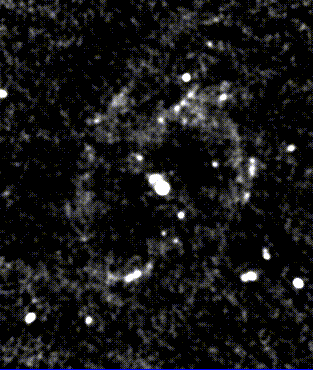
Now we see the radio emission from M81. This wavelength band contains emission from electrons in regions of ionized gas, given off as they encounter protons without recombining, and nonthermal emission, produced by highly energetic particles as they spiral in interstellar magnetic field. These particles are at least in part given their energy in the remnants of supernova explosions. The radio emission traces closely the sites of star formation seen in the ultraviolet and at H-alpha, but now dust absorption plays no role. In some galaxies, therefore, radio observations are the preferred way to trace star formation; data at several wavelengths can help seperate just which mechanism provides how much of the radio emission. This image is from data obtained by Michele Kaufman (Ohio State University) using the Very Large Array of the National Radio Astronomy Observatory.
Last changes: 5/2001 © 2001